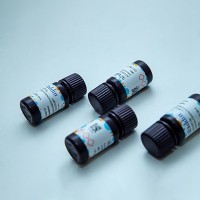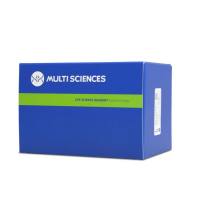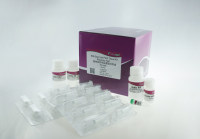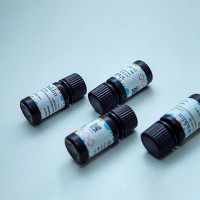RNA文献大汇总
互联网
5642
一、文献
1. Chen, H.H., J. Lebon, and A.D. Riggs, Analysis of RNA structure and RNA-protein interactions in mammalian cells by use of terminal transferase-dependent PCR. Methods Mol Biol, 2008. 488: p. 319-41.
2. Terzi, L.C. and G.G. Simpson, Arabidopsis RNA immunoprecipitation. Plant J, 2009.
3. Baroni, T.E., et al., Ribonomic and short hairpin RNA gene silencing methods to explore functional gene programs associated with tumor growth arrest. Methods Mol Biol, 2007. 383: p. 227-44.
4. Banerjee, H. and R. Singh, A simple crosslinking method, CLAMP, to map the sites of RNA-contacting domains within a protein. Methods Mol Biol, 2008. 488: p. 181-90.
5. Jensen, K.B. and R.B. Darnell, CLIP: crosslinking and immunoprecipitation of in vivo RNA targets of RNA-binding proteins. Methods Mol Biol, 2008. 488: p. 85-98.
6. Conrad, N.K., Chapter 15. Co-immunoprecipitation techniques for assessing RNA-protein interactions in vivo. Methods Enzymol, 2008. 449: p. 317-42.
7. Gilbert, C. and J.Q. Svejstrup, RNA immunoprecipitation for determining RNA-protein associations in vivo. Curr Protoc Mol Biol, 2006. Chapter 27: p. Unit 27 4.
8. Gorgoni, B. and N.K. Gray, The roles of cytoplasmic poly(A)-binding proteins in regulating gene expression: a developmental perspective. Brief Funct Genomic Proteomic, 2004. 3(2): p. 125-41.
9. Mangus, D.A., M.C. Evans, and A. Jacobson, Poly(A)-binding proteins: multifunctional scaffolds for the post-transcriptional control of gene expression. Genome Biol, 2003. 4(7): p. 223.
10. Penalva, L.O., S.A. Tenenbaum, and J.D. Keene, Gene expression analysis of messenger RNP complexes. Methods Mol Biol, 2004. 257: p. 125-34.
11. Baroni, T.E., et al., Advances in RIP-chip analysis : RNA-binding protein immunoprecipitation-microarray profiling. Methods Mol Biol, 2008. 419: p. 93-108.
12. Peritz, T., et al., Immunoprecipitation of mRNA-protein complexes. Nat Protoc, 2006. 1(2): p. 577-80.
13. Ryder, S.P., M.I. Recht, and J.R. Williamson, Quantitative analysis of protein-RNA interactions by gel mobility shift. Methods Mol Biol, 2008. 488: p. 99-115.
14. Niranjanakumari, S., et al., Reversible cross-linking combined with immunoprecipitation to study RNA-protein interactions in vivo. Methods, 2002. 26(2): p. 182-90.
15. Tenenbaum, S.A., et al., Ribonomics: identifying mRNA subsets in mRNP complexes using antibodies to RNA-binding proteins and genomic arrays. Methods, 2002. 26(2): p. 191-8.
16. Keene, J.D., J.M. Komisarow, and M.B. Friedersdorf, RIP-Chip: the isolation and identification of mRNAs, microRNAs and protein components of ribonucleoprotein complexes from cell extracts. Nat Protoc, 2006. 1(1): p. 302-7.
17. Townley-Tilson, W.H., et al., Genome-wide analysis of mRNAs bound to the histone stem-loop binding protein. RNA, 2006. 12(10): p. 1853-67.
18. Stoecklin, G., et al., Genome-wide analysis identifies interleukin-10 mRNA as target of tristetraprolin. J Biol Chem, 2008. 283(17): p. 11689-99.
19. Walker, S.C., et al., RNA affinity tags for the rapid purification and investigation of RNAs and RNA-protein complexes. Methods Mol Biol, 2008. 488: p. 23-40.
20. Schmitz-Linneweber, C., R. Williams-Carrier, and A. Barkan, RNA immunoprecipitation and microarray analysis show a chloroplast Pentatricopeptide repeat protein to be associated with the 5' region of mRNAs whose translation it activates. Plant Cell, 2005. 17(10): p. 2791-804.
21. Tenenbaum, S.A., et al., Identifying mRNA subsets in messenger ribonucleoprotein complexes by using cDNA arrays. Proc Natl Acad Sci U S A, 2000. 97(26): p. 14085-90.
二、补充一篇文献,RIP技术的非常详细介绍
Reversible cross-linking combined with immunoprecipitation to study RNA–protein interactions in vivo
Somashe Niranjanakumaria, Erika Lasdaa, Robert Brazasa and Mariano A. Garcia-BlancoCorresponding Author Contact Information, E-mail The Corresponding Author, a, b, c
a. Department of Genetics, Duke University Medical Center, Durham, NC 27710, USA
b. Department of Microbiology, Duke University Medical Center, Durham, NC 27710, USA
c. Department of Medicine, Duke University Medical Center, Durham, NC 27710, USA
Accepted 10 January 2002.
Available online 22 May 2002.
Abstract
Protein–RNA interactions play indispensable structural, catalytic, and regulatory roles within the cell. Understanding their physical association in vivo provides valuable insight into their assembly, function, and regulation in the cellular milieu. Inspired by the chromatin immunoprecipitation assay, we have developed a ribonucleoprotein (RNP) immunoprecipitation assay to study RNA–protein interactions in vivo. This method takes advantage of the highly reactive, reversible crosslinker formaldehyde, combined with high-stringency immunoprecipitation to identify specifc RNAs associated with a given protein. The RNP immunoprecipitation (RIP) assay was developed using RNA–protein interactions of hepatitis delta virus (HDV) as a model system. HDV is an RNA virus with a single-stranded circular RNA genome that encodes one viral protein, hepatitis delta antigen (HDAg). The high affinity of HDAg for the HDV RNA genome, combined with the well-characterized anti-HDAg antibodies, made this system a logical starting point for the development of the RIP assay. Cells with replicating HDV were crosslinked with formaldehyde and the HDV RNPs were immunoprecipitated using anti-HDAg antibodies. The crosslinks were then reversed by heat treatment, and the immunoprecipitated HDV RNAs were identified by reverse transcription polymerase chain reaction (RT-PCR). The specificity of this assay was tested using HDV mutants and heterologous antibodies for immunoprecipiation followed by RT-PCR with HDV-specific primers. This experiment showed no nonspecific immunoprecipitation of the HDV RNPs. The method was tested further using protein–RNA interactions known to exist in the U1 snRNP. The results indicate that the RIP assay is a powerful tool to identify RNA–protein interactions in vivo and has the potential to unravel the cellular network of RNP complexes in their native setting.
Author Keywords: RNA–protein crosslinking; Ribonucleoprotein complex; Ribonucleoprotein immunoprecipitation assay; Formaldehyde crosslinking
Article Outline
1. Introduction
2. Description of the method
2.1. In vivo formaldehyde fixation of cells
2.2. Solubilization of crosslinked complexes by sonication
2.3. Preclearing lysates
2.4. Fragmentation of RNA
2.5. Immunoprecipitation of crosslinked RNP complexes
2.6. Reversal of crosslinks and RNA purification
2.7. Analysis of immunoprecipitated RNA by RT-PCR
3. Development of the RIP assay using hepatitis delta virus RNPs
3.1. Specific crosslinking of HDAg to HDV RNA
3.2. HDAg antibodies specifically immunoprecipitate HDV RNA–protein complexes
3.3. Immunoprecipitation of crosslinked HDV lysates with Sm antibodies
4. Application of the RIP assay to U1 snRNP
5. Concluding remarks
Acknowledgements
References
Fig. 1. Diagrammatic representation of RIP assay using formaldehyde. The basic strategy of the RIP assay is described in the form of a flowchart. Live cells in PBS are crosslinked with formaldehyde. Crosslinking is quenched by adding glycine and the fixed cells are lysed by sonication. A specific antibody against the target protein is used to immunoprecipitate crosslinked complexes, and the immunoprecipitates are washed with stringent buffers. The crosslinks are reversed, and the RNA is isolated and analyzed by RT-PCR using specific primers.
Methods | Volume 26, Issue 2, February 2002, Pages 182-190
http://www.sciencedirect.com/science?_ob=ArticleURL&_udi=B6WN5-45WGJF8-C&_user=10&_coverDate=02%2F28%2F2002&_rdoc=1&_fmt=high&_orig=search&_sort=d&_docanchor=&view=c&_searchStrId=1384292804&_rerunOrigin=scholar.google&_acct=C000050221&_version=1&_urlVersion=0&_userid=10&md5=021487efa748b652eb2b684010556aed







